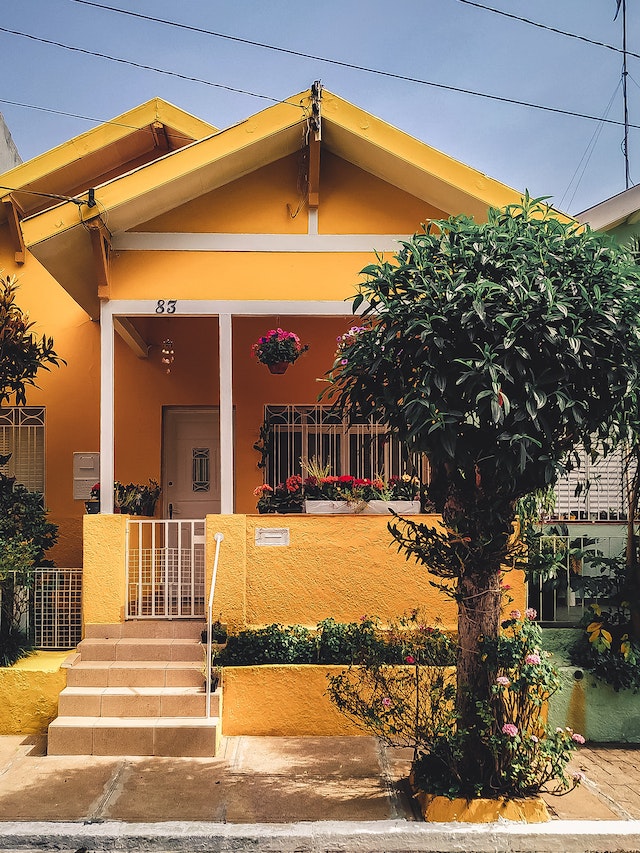Farmland in the U.S. has escaped the real estate crisis, with prices reaching new highs
Purchasing land in rural America has never been more costly, even with interest rates on the rise.

Rising commodity prices have resulted in record profits for farmers this year, prompting a rush for planting land in 2023. More demand came as people fled to the countryside during the pandemic, with non-metropolitan regions developing faster than urban areas, while investors turned to fields as an inflation hedge.
According to statistics from the Federal Reserve Bank of Chicago and the National Association of Realtors, farmland costs in the Midwest, the country's breadbasket, increased 20% in the third quarter from the previous year, defying a decline in the residential real estate market. That was the eleventh quarter of growth in a row, the longest stretch since 2014.
According to Jim Schultz, CEO of Open Prairie, an Illinois private-equity investment company, farmland values, might double within the next ten years. That's after the 13,000 acres he purchased for $750 per acre between 1987 and 1992 are now worth 16 times higher. He believes the market is at the beginning of a decade-long trend",which could offer a very profitable situation, so he has no plans to sell his land.
Producers across the United States are earning more money as a result of Russia's invasion of Ukraine, which has cut off supply from Ukraine as a vital supplier of corn, wheat and sunflower oil. Higher prices have increased farmer earnings by 14% this year to about $161 billion.
Expansion of Broadband
Increased need for farmland correlates with population changes caused by pandemics. According to the USDA, the number of persons living in non-metro counties increased 0.3% in the 12 months ending in July 2021, marking the first time that rural population growth outperformed that of metropolitan regions since the mid-1990s.
The development of the internet and the opportunity to work from home, according to Tom Halverson, CEO of CoBank, a cooperative lender serving rural America, aided in fueling that transition.
During his interview on Bloomberg TV, he stated: "The reality is that for the first time in several decades, rural America is picking up population. It’s our hope and our expectation that this will be somehow structural, but it will be unevenly distributed across the country."
Farmland has also become more appealing as proprietors attempt to profit from the transition to sustainable energy. According to BloombergNEF, demand for renewable diesel, which is derived from vegetable oils but has the same chemical qualities as petroleum-based fuel, is predicted to increase three times over the next five years.

Farmers also have room for solar panels and wind turbines, and the number of farms with photovoltaic installations increased two times in the five years leading up to 2017, per the most recent USDA agricultural census. Nonetheless, cropland with renewable facilities accounted for just 6.5% of the total, indicating unfulfilled potential.
Producers may now benefit from carbon sequestration, as the price for carbon they can receive from Indigo Ag doubled in the last two years.
The US in Recession
To be certain, higher interest rates and a possible US recession in the next year might still have an impact on the agriculture market. According to Luke Worrell, an agricultural trader in the Illinois town of Jacksonville, prices for grade-A plots might fall by 2% to 5% next year.
As remarked by Warrel in an interview, "Between decreasing returns and higher interest rates, you’re hitting your top two buyers of farmland. It’s a one-two punch. We’ve had a wild ride, but we’d be naive to think it will last forever. We have to prepare for a little softening."
The cost of land is the most daunting challenge for young farmers, according to Matthew Fitzgerald, who raises organic corn and soybeans with his family in McLeod County, Minnesota. He used a USDA program to increase his family's 200 acres to around 2,500 acres, and he is collaborating with AcreTrader, an agriculture-land investment platform that buys estate that he then administers and co-invests in.
According to Fitzgerald's comments, with agricultural pricing at these levels, it is an entire riddle to figure out how to remain competitive and purchase farmland. Commodity farming in the Midwest reminds him of the mafia — "you have to know someone or have a lot of money."
Genuine Asset
At a further perspective, an increasing global population combined with climate change makes arable land in the Midwest critical to world food supply.
Outside investors' interest is also growing. Farmland is regarded as an excellent inflation hedge since the commodities it supplies often increase in value when general prices rise.
Land is a genuine asset, said Gary Schnitkey, a University of Illinois professor, during a conference in Champaign. “Do you want to own a piece of dirt or cryptocurrency? It’s a good way to diversify your asset pool.”





























